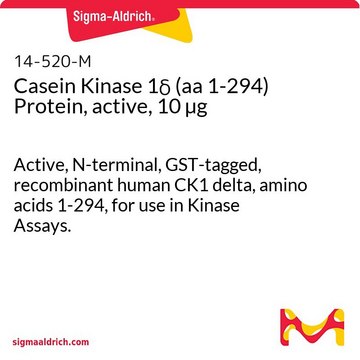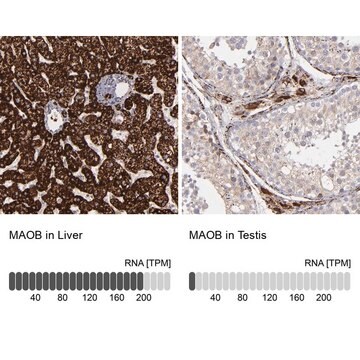AB15242
Anti-zDHHC8 Antibody
from rabbit, purified by affinity chromatography
Sinónimos:
Zinc finger DHHC domain-containing protein 8, Zinc finger protein 378, membrane-associated DHHC8 zinc finger protein, zinc finger, DHHC domain containing 8, zinc finger, DHHC domain like containing 1, zinc finger, DHHC-type containing 8
About This Item
Productos recomendados
origen biológico
rabbit
Nivel de calidad
forma del anticuerpo
affinity isolated antibody
tipo de anticuerpo
primary antibodies
clon
polyclonal
purificado por
affinity chromatography
reactividad de especies
rat, human
reactividad de especies (predicha por homología)
horse, bovine, Xenopus, chicken, pig, chimpanzee, ape, opossum, mouse, dog
técnicas
western blot: suitable
Nº de acceso UniProt
Condiciones de envío
wet ice
modificación del objetivo postraduccional
unmodified
Información sobre el gen
chimpanzee ... Zdhhc8(458662)
human ... ZDHHC8(29801)
Descripción general
brain, and maximal expression coincides with peak forebrain synaptogenesis shortly after birth. Furthermore, their protein products are associated with brain mitochondria, including those in synaptic terminals. Among the six, only Zddhc8 influences mitochondria-regulated apoptosis when overexpressed, and appears to interact biochemically with established mitochondrial proteins. Zdhhc8 has an apparent interaction with Uqcrc1, a component of mitochondrial complex III. The two proteins are coincidently expressed in pre-synaptic processes; however, Zdhhc8 is more frequently seen in glutamatergic terminals (1).
Especificidad
Inmunógeno
Aplicación
Neuroscience
Developmental Neuroscience
Calidad
Descripción de destino
Forma física
Almacenamiento y estabilidad
Handling Recommendations: Prior to removing the cap, gently centrifuge the vial and gently mix the solution.
Nota de análisis
Fetal human brain
Otras notas
Cláusula de descargo de responsabilidad
¿No encuentra el producto adecuado?
Pruebe nuestro Herramienta de selección de productos.
Código de clase de almacenamiento
10 - Combustible liquids
Clase de riesgo para el agua (WGK)
WGK 2
Punto de inflamabilidad (°F)
Not applicable
Punto de inflamabilidad (°C)
Not applicable
Certificados de análisis (COA)
Busque Certificados de análisis (COA) introduciendo el número de lote del producto. Los números de lote se encuentran en la etiqueta del producto después de las palabras «Lot» o «Batch»
¿Ya tiene este producto?
Encuentre la documentación para los productos que ha comprado recientemente en la Biblioteca de documentos.
Nuestro equipo de científicos tiene experiencia en todas las áreas de investigación: Ciencias de la vida, Ciencia de los materiales, Síntesis química, Cromatografía, Analítica y muchas otras.
Póngase en contacto con el Servicio técnico








